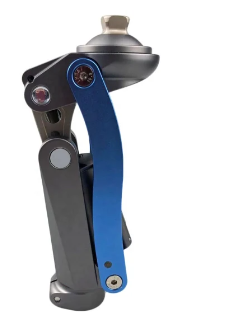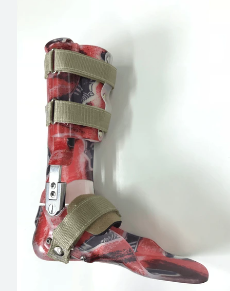ABOVE KNEE PROSTHESIS
A pneumatic knee joint is a type of artificial knee joint that uses compressed air to assist with movement and support.
it use in above knee prosthesis .
feature :-
Dynamic Movement: Pneumatic systems allow for smooth and adaptive movements, mimicking natural knee motion.
A typical pneumatic cylinder consists of a cylinder barrel, a piston, seals, and end caps. It may also include ports for air input and output.
Compressed air is introduced into the cylinder through an inlet port. This air is typically generated by an air compressor.
As the compressed air enters the cylinder, it pushes against the piston. This pressure causes the piston to move in one direction (extend or retract) depending on the configuration of the cylinder.
When the piston reaches the end of its stroke, the air can be vented out through an exhaust port, allowing the piston to return to its original position. This can happen either automatically or through a control system.
The motion can be controlled using valves that regulate the flow of air into and out of the cylinder, allowing for precise control of the piston’s movement.
Lightweight Design: Pneumatic components can be lighter than traditional mechanical parts, improving comfort for the user.
Shock Absorption: The system can absorb impact, reducing stress on other joints and enhancing overall mobility.
Send Message









